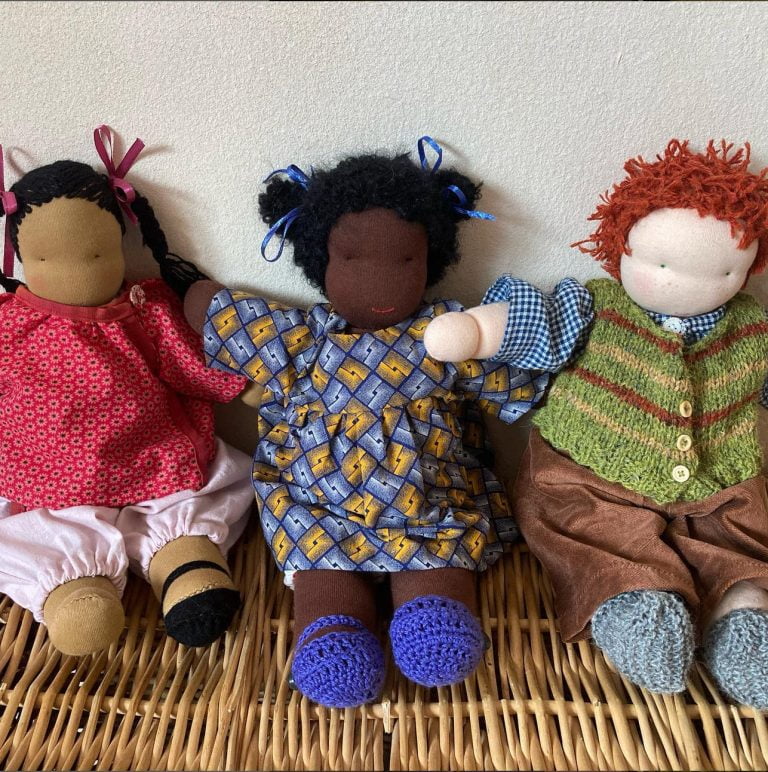
Posted on December 12, 2023
One of the first things I noticed when entering the Waldorf Kindergarten so many years ago when my first born was ready to start school, was the environment of the classroom. The colors were calm and soothing, the toys and furniture made from wood and other natural materials, and supplies were mostly beeswax crayons, wool and natural paint, to name a few. It didn’t occur me to question “why?” they were as they were, because it was so beautiful and felt so right. Working at the International Waldorf School The Hague has taught me that some parents do question the reasoning behind the durable, natural materials at school. What is the thinking behind this choice? In this new series in the newsletter, we will explore the learning materials of the IWSTH, one at a time.
In the Kindergarten, materials are used that inspire creativity and imagination. Cloth dolls, for example, are faceless or with simple features without detail. This allows the child to fill in what they think the doll looks like, thinks and feels, with their own imagination, so they can develop their inner picturing abilities. The dolls are often made by the teacher, with thought and care for the specific children in his or her class. At our school, we have children from various backgrounds, and the teachers are careful to reflect that diversity in the dolls. Dolls and people come in different colors, with different types of hair and other features. Children are therefore able to see themselves in the dolls, allowing them to appreciate and honor diversity in the classroom.
Sensory experiences in early childhood are essential, so giving children toys that inform these experiences in a nourishing and soothing way are vital. When a young child cuddles a Waldorf doll stuffed with wool, covered in cotton with a head of soft mohair, the softness and comfort of this doll will create a calm and gentle feeling in the child, allowing them to settle their emotions.
The materials that make up the doll are soft, with thick wool filling – giving a weight to the object that, for a small child can be similar to holding a real baby. This encourages empathy and nurturing and again, can be soothing to hold for those children who need comforting. Some of the other materials we will be exploring in this series are modeling beeswax, block and staff beeswax cray- ons, colored pencils, fountain pen, and recorder. If there’s something you’re especially interested in learning about, please let us know by emailing info@iwsth.org.
Like what you read? Share it!
About IWSTH
The International Waldorf School of The Hague is a non-profit international primary school with a distinct educational vision. Engagement with societal developments in sustainability, peace, justice and well-being plays a key role in shaping our educational programme.
